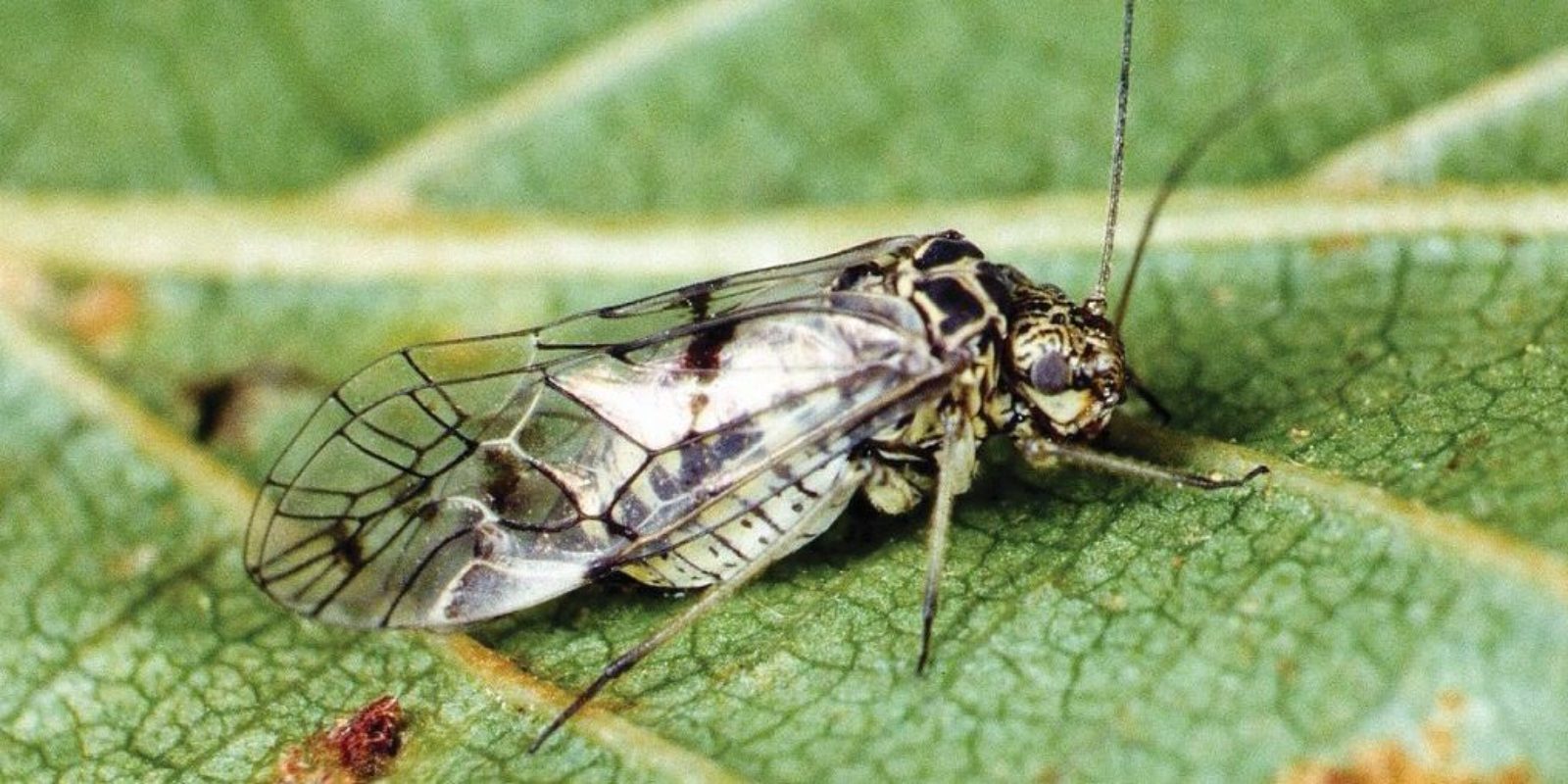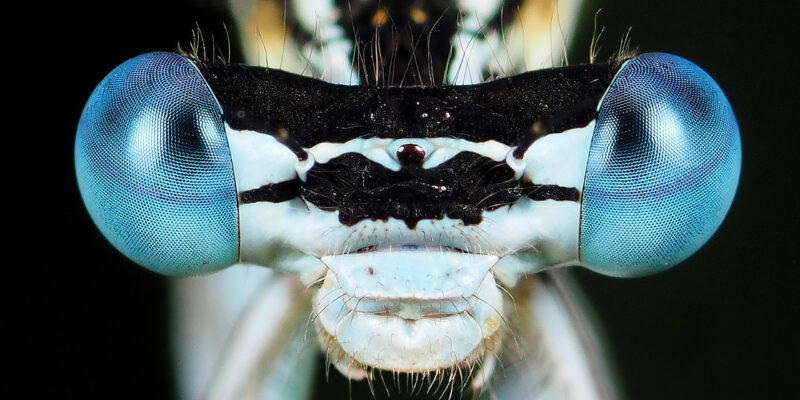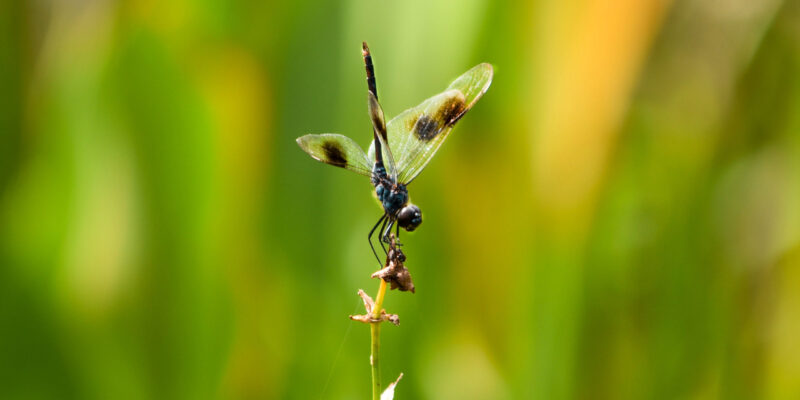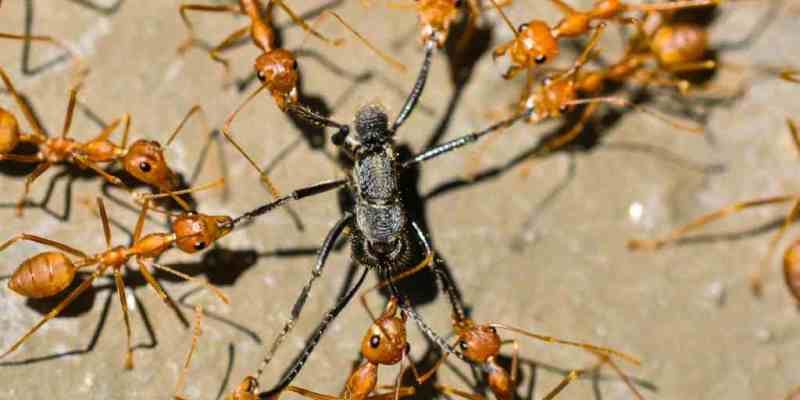
Booklice and barklice
The Pscocoptera have long been regarded as phylogenetically close to the Phthiraptera, but recent research has suggested that the Phthiraptera may even be a subgroup of the Psocoptera, within the wider group of Psocodea. Not surprisingly there is some reluctance to accept this view fully, because it would have implications for the integrity of the Psocoptera. Such a paraphyletic group could no longer retain its status as an order, a rather similar situation to that of the Isoptera and Dictyoptera.
Apart from their similarities with Phthiraptera, the Psocoptera are most likely to be confused with the jumping plant-lice in the hemipteran Psylloidea, as they can be found in similar situations. However, the Psocoptera all have biting mouthparts, quite different to the sucking rostrum of the Psylloidea; the wing venation is different, and Psocoptera do not jump if disturbed.
Most species are just a few millimetres long and the wings are well-developed, longer than the body, and sometimes distinctively marked. The wing venation is of considerable use in the classification of many families. However, brachyptery and aptery are frequent in some groups and the common domestic pests such as Liposcelis and Trogium are always wingless. Occasionally the short fore wings in brachypterous species are easily shed, giving the appearance of complete aptery.
The adult antennae are long and slender but a distinctive feature of the head is the enlarged, bulbous postclypeus, which often has a characteristic pattern of striations. The eyes are generally well developed, but in many of the wingless species the eyes are greatly reduced.
There is no single common name for this group, and they are often simply called psocids. The indoor species are often termed booklice or dustlice, neither of which is particularly appropriate or accurate. The outdoor species are sometimes called barklice but some recent authors prefer the newly coined name of barkflies, to avoid the negative connotations of the term ‘lice’.
Some species can produce sounds audible to humans, and these sounds are probably important as part of courtship rituals; most species reproduce bisexually, though facultative or obligatory parthenogenesis is widespread in some families. Psocid nymphs usually have six instars, though this number is reduced in some polymorphic species, especially associated with brachyptery or aptery.
Although most people will encounter the relatively few species that occur indoors, the majority of British species are found outside on a wide variety of plants. They feed on algae, lichens and fungi, often on the bark of trees or woody shrubs and their mouthparts are adapted to prising up these micro-epiphytes, biting off pieces and chewing them. Many species are generalised feeders, but others have very specific needs so that species that feed on algae cannot transfer to lichens, for example.
Thus the association of psocids with particular trees is based on the habitat preferred by their food-plant, rather than on direct requirements of the insects. Although some species are found on the leaves and small twigs, others are confined to the trunks of trees where they may even live under the bark.
The domestic species of psocids that are found in houses or industrial food-stores were initially adapted to feeding on the moulds found on farinaceous foodstuffs or on damp books and paper. Some of these have adapted to feed directly on food such as flour and they have become independent of dampness because they can absorb water vapour from the atmosphere. This clearly accounts for the success in these few species being able to colonise and exploit conditions that would be hostile to most members of the group.
Although they are not often serious pests in domestic houses, their presence in foodstuffs is clearly unacceptable to most people, and the contamination by faecal material is unpleasant. It can be a different matter in industrial scale food storage, because infestations may go unnoticed and therefore build up to large numbers very quickly. Although only a few cosmopolitan species fall in this category, their control is important in many countries.
Worldwide there are around 5,000 known species in 17 families; in Britain there are about 100 species in 19 families.
Identification help



